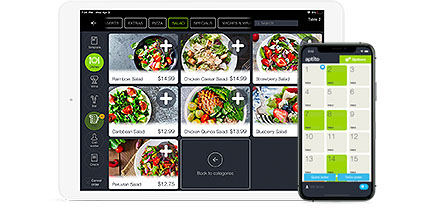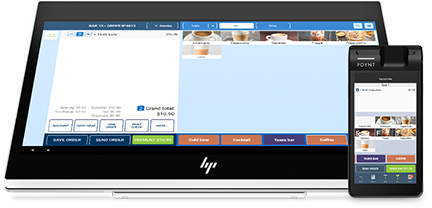
How Restaurant Owners Can Survive Through the COVID-19 Pandemic24 min read
A new coronavirus was first documented in Wuhan, China, in December 2019. Since then, confirmed cases have appeared on six continents and in more than 100 countries. The world’s health systems are funneling resources into combating the outbreak. At present, the COVID-19 event is classified as a slow pandemic.
What is the Coronavirus?
Coronaviruses are a family of viruses that cause respiratory illness. They are common in animals, such as birds, and occasionally cross over to humans. The ability to hop from animal to human marks them as zoonotic viruses, among the most dangerous type. Through mutation, they can become more dangerous.
Signs of COVID-19 infection are similar to those of the common cold. This includes respiratory symptoms such as:
- Dry cough
- Fever
- Breathing difficulties
- Shortness of breath
However, in some, the disease can progress to viral pneumonia as the virus hijacks the immune system. It is these cases that can become fatal. Preliminary data suggest that COVID-19 is very contagious, but that it is not as deadly as other coronaviruses. Still, the worldwide death toll is mounting as researchers scramble to create a vaccine.
The World Health Organization officially declared COVID-19 a pandemic on March 11.
What is Being Done?
In order to ensure that this novel coronavirus remains as contained as possible, it’s imperative that everyone practices social distancing. This will likely be enforced in many areas until a basic vaccine is developed. This is the only way to ensure that coronavirus doesn’t become a fast pandemic.
A fast COVID-19 pandemic could be catastrophic.
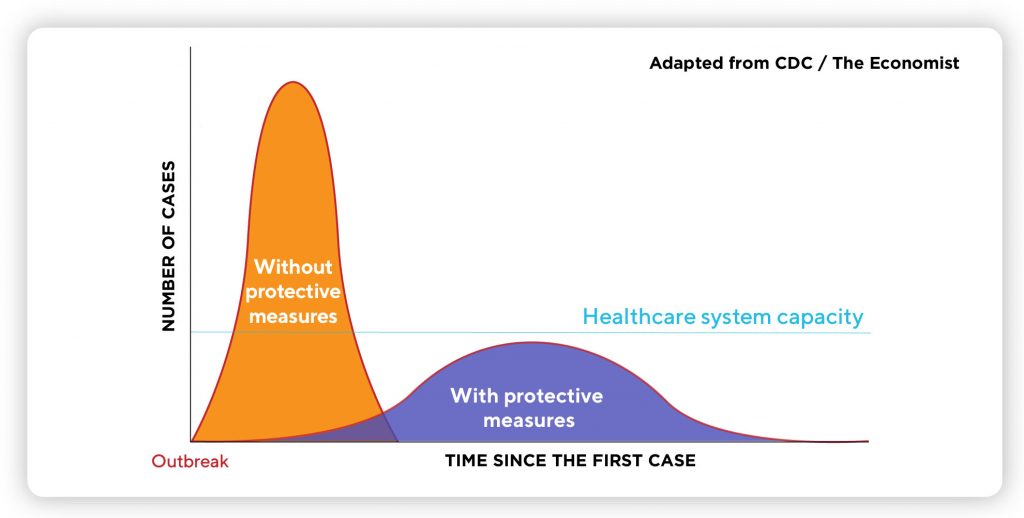
In a fast pandemic, existing health care infrastructure would become overwhelmed. Resources would be spread thin. Essentially, hospitals would have to look at the gravely ill and decide who lives and who dies. Grim, we know. But this outcome is possible until a vaccine is created. Fortunately, human trials are under way.
What’s not so fortunate is what social distancing does to the economy. As you’re no doubt aware, the restaurant and hospitality industries are among the hardest hit. Let’s see how we got here.
The Immediate Impact on the Restaurant Industry
As mentioned, scientists believe that the COVID-19 outbreak originated in China. According to Rand Corporation, the virus is having a large economic impact there as well.
But as the origin of the virus became clear, many Americans stopped patronizing American Chinese food restaurants. This is likely a subconscious reaction, but it’s nevertheless unfortunate. It’s also somewhat ironic, since Americanized Chinese food restaurants have little in common with actual Chinese cuisine. Some Chinese restaurants have reported steep declines in sales, and others have closed.
According to Yelp, interest in Chinese cuisine typically peaks around Chinese New Year. Not so this year. Additionally, the term ‘coronavirus’ featured heavily in recent Yelp reviews for Chinese restaurants. Hardly fair, but that’s the nature of the Internet.
Of course, this is only one segment of the restaurant industry. By early March, the situation was becoming dire for all restaurants. West Coast cities, like Seattle, saw a hike in COVID-19 cases around this time. According to Foursquare, visits to casual dining restaurants started to dip.
Naturally, full-service restaurants also took a hit. According to data made available by OpenTable, reservations in Seattle fell by 31 percent by March 3rd.
By March 8th, several states, including Florida, California and Washington, declared a state of emergency.
It’s here that the situation becomes most serious for us in the restaurant industry. A state of emergency, combined with the nature of the pandemic, means that many restaurants have been limited to offering takeout and delivery only.

On March 11, Resy CEO Ben Leventhal warned partner restaurants to expect significant revenue declines through April. But in an industry that depends on foot traffic, what are restaurant owners to do? While there are no miracle solutions that will work for everyone, you’re likely to find something in this guide. Read on.
Prepare Your Workspace & Manage Your Workforce
Now is the time to create a COVID-19 preparedness plan. The purpose of this plan is to help you and your management take protective steps to protect yourselves from the virus. The first step in such a plan is to stay well-informed about changes in federal, local, tribal or territorial policies. If you’ve been ordered to offer takeout or delivery only, don’t try to fight this. Local, state and federal agencies have increased authority in times of national crisis, and this is a fight you will lose.
Here are a few commonsense steps you can take to try to limit the spread of the virus in your restaurant.
- Find out who has been in contact with lots of people. Do you have staff that have just gotten back from international travel? Do you have employees who live with hospital staff, such as nurses or doctors? These folks are at higher risk. COVID-19 has an incubation period of around four days. So tell these folks to stay home.
- Find out if you have employees who have greater individual risk factors. Consider asking them to stay home for the time being. This is for their protection as well as yours. This includes anyone who has type two diabetes, other chronic medical conditions, a compromised immune system or women who are pregnant. Additionally, individuals of advanced age are at greater risk regardless of other health factors.
- Think about what you can do with a reduced workforce. If you’re not serving your usual diners, that means that you must trim the fat. Sit down and do the math. If you’re running a leaner operation, how many employees do you need? The fewer employees in your restaurant, the less chance COVID-19 has to enter and spread. Put another way, the fewer people in your establishment, the fewer vectors for transmission.
Next, it’s imperative that you shield your kitchen from the virus. Restaurants and businesses in which employees have tested positive for COVID-19 have been asked to close down. In New York City, this was the fate of two Trader Joe’s groceries. Now consider, for a moment, how cramped the average commercial kitchen is. A virus like COVID-19 could easily spread between employees.
When thinking of COVID-19, take the following into account:
- Potential sources of exposure
- Routes of transmission
- Exposure risks
For instance, a possible route of transmission for pretty much all restaurants is truck deliveries. Therefore, requiring all delivery personnel to wear disposable masks while on your premises is not unreasonable. After you take receipt of goods, thoroughly sanitize all touched surfaces with 70 percent alcohol or other suitable sanitizer.
If an employee calls in sick, take them at their word and insist they remain at home. Infected individuals are most contagious when they’re most symptomatic. This means that you should keep anyone experiencing fever, chills, persistent cough or shortness of breath out of your restaurant.
Next, you should instruct all employees to periodically sanitize surfaces. This should be a matter of course in all restaurants, but consider doubling down. Right now, there’s no such thing as too clean.
The virus is composed of a fatty outer shell. Good ol’ soap disrupts this fatty layer and removes it from surfaces all in one stroke. The virus also contains proteins on its exterior shell. 70 percent alcohol disrupts these proteins, removing the virus’ ability to infect. So it’s a good idea to use both soap and alcohol.
If an infected person coughs, they can infect other people up to six feet away. Therefore, the primary means of transmission is via respiratory droplets. These droplets are full of the virus and come from the back of the throat or lungs. When these droplets are expelled, there’s a chance that the virus will land on someone else. But if the uninfected person merely touches a surface that’s been exposed to these droplets, they can become infected. All they need to do at this point is touch their eyes, nose or mouth.
Research is still ongoing, but it seems that the virus can remain viable on untreated surfaces for up to a day. However, the virus can live longer on surfaces that are frequently touched by humans and that are not disinfected. This is because human skin produces oil, and these oils can allow the virus to remain viable in the environment. In this way, humans can spread the virus by touching contaminated surfaces.

At a minimum, you should enforce a policy of frequent hand washing. The most effective scheme looks like this: employees should wash their hands once per hour while on the clock, with soap. They should wash for a minimum of 20 seconds. The best practice is to wash once for 20 seconds, and then to lather up again.
Note: Before washing, they should sign a hand washing log indicating that they did so. This way, you can see who is not signing the sheet and take appropriate action. It’s important they sign the sheet before washing their hands. This way, they’re handling a pen or touching a touch screen before they wash and not after.
If running water and soap are not handy nearby, you should provide rubbing alcohol or hand sanitizer that is at least 70 percent alcohol. Hourly hand washing or sanitizing will reduce the virus’ ability to spread and will minimize the inherent risk introduced from receiving regular deliveries from outsiders.
Smartphones must be kept out of the kitchen. One of the filthiest surfaces known to man is the smartphone touch screen.
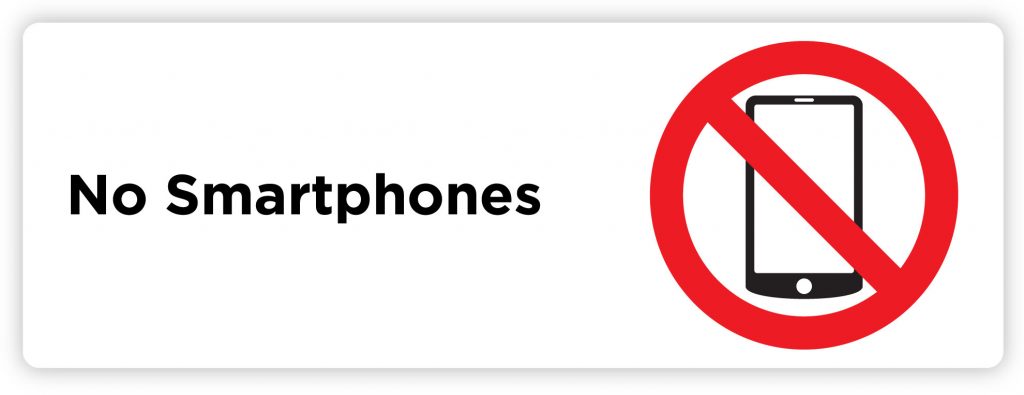
You may also consider asking employees to sanitize their hands before entering the kitchen. If you do, provide a hand sanitation station for this purpose. If you provide the sanitizer yourself, employees are more likely to comply.
Next, enact a policy of respiratory etiquette and enforce it. Employees should cover coughs and sneezes, and they should use hand sanitizer when they do either.
Ensure that employees have access to adequate tissue and trash receptacles. We realize that prices may increase as people panic buy tissue and other items, but it’s imperative that your employees have access to a way to easily dry their hands. If they can’t dry their hands, they won’t wash their hands. But they’ll tell you they did.
If at all possible, allow salaried managers to work from home. If you utilize a modern POS system, you can likely create logins for salaried managers so they can access mission-critical metrics remotely. If nothing else, your manager can probably create a schedule from home.
Additionally, you can make your schedule available online to employees via Slack, discord or other services to prevent employees coming in to check the schedule.
The pandemic will likely persist until researchers produce a vaccine. This has repercussions for your workforce. Expect:
- Absenteeism. You may have to put up with more holes in your schedule than usual. But as mentioned above, this isn’t a bad thing if it prevents the rest of your staff from contracting the virus. Note that workers may be absent for any number of reasons; it doesn’t necessarily mean they’re infected. For instance, they may be caregivers of sick family members. Or perhaps their day care center has closed and they now have to look after small children without help.
- Changes in commerce. We’ve touched upon this one, but in times of crisis, people tend to spend more on necessities and less on indulgences. As such, expect declines in revenue to persist until a vaccine is available. The flip side of this is that consumers are showing increased interest in delivery and takeout services, as you might expect. So-called ghost kitchens, in particular, are well set up to ride the wave. More on them in a bit.
- Interrupted supply. This is a biggie, and sadly, there isn’t much you can do. If the pandemic shifts from slow to fast, expect deliveries to become intermittent as more and more drivers fall ill. For now, this isn’t of major concern. However, if you rely on items from areas heavily affected by COVID-19, you may be hit with delays or even order cancellations.
As social distancing efforts increase, diners still need to eat. Hope is not lost. Do what you can now to transition to a takeout or delivery model. More on this later.
13 Ways to Safeguard or Grow Your Revenue
Now that we’ve covered the basics, let’s shift our attention to how you might safeguard your revenue during these turbulent times. As mentioned, there are no miracle solutions that will work for everyone. But you’ll find something on this list that can help you. Heck, it might even make a critical difference. If you find something on this list that helps, please consider giving this post a share so your fellow restauranpreneur might benefit too.
#1 Make the Hard Decisions Now
We know you care about your staff. We know you don’t want to think about letting anyone go. But the reality is, if you aren’t proactive about making the tough calls, your staff could suffer more. You could suffer too. If it gets to the point where you’re no longer earning the revenue you need to keep the lights on, you must get rid of some employees. Naturally, labor is one of your biggest costs, and it’s largely in your control.

Consider that a temporary layoff now might mean that they’re able to get unemployment faster.
While no one wants to let go off loyal staff, it could be in their best interest. When things eventually pick up—expect this to be right after a vaccine is announced—you can bring them back.
#2 Ask Guests for Understanding & Support
Many folks are eager to support their favorite local businesses. Communicate with your guests via your website, Google My Business, social media and other channels. Keep them apprised of your situation, but try to maintain a positive or neutral tone. Clearly and calmly communicate any changes you’re making regarding hours of operation, sanitation procedures etc., and directly ask for support and understanding.
In addition, you could create a survey and ask guests which menu items they want most right now. This can help you pare down your menu, which can reduce food costs and can help you increase kitchen efficiency. You can create surveys for free using Google Forms or SurveyMonkey. Post the survey to social media and ask your most enthusiastic fans to spread it around.
#3 Check Online Listings
Many communities are compiling online lists of restaurants that are remaining open during the COVID-19 outbreak. Find your local lists and make sure you’re on them. This will help consumers find you for takeout or delivery orders.
There’s another type of listing you should know about, too. These are lists of local businesses that are struggling to stay open. If you need to, do whatever you need to get on these lists. You never know, someone well off may decide to support you. Can’t hurt.
#4 Consider Closing Some Days of the Week
Dig into your POS data and check for your busiest days. If you close for a few days of the week, you’ll save on electric and water costs.

#5 Request Adjusted Terms
If you pay rent, request rent abatement. You’ll need to consult your lease to see what it allows, but there is often some wriggle room in situations like these. Usually, a landlord would rather keep you as a tenant than look for a new one. You may also get some help from local government or non-profits, so don’t be shy about asking around.
In addition, now may be the time to think about renegotiating terms with business partners. If you have a line of credit, ask them to decrease your interest rate for the time being. The COVID-19 situation is novel in recent memory. You might be surprised how willing vendors will be to work with you. Just don’t ask them to stretch too far. If they aren’t willing to budge on interest rate, see if they’ll extend your payment window.
If your credit is in good standing, you may also look into increasing your credit line if you have the risk tolerance.
#6 Think Outside the Plate
It might be time to get creative. Some restaurant owners have turned to food trucks, pop-up stands or ghost kitchens. Of course, pursuing these requires funds. Of these, setting up a ghost kitchen may be the fastest and least expensive if you know someone who can do the Web design for you. Food trucks and carts often require permits, after all. Keep in mind though that a ghost kitchen site won’t rank in Google overnight. You’ll rely on direct advertising—ouch!—or word of mouth to get you off the ground. You’ll also have to pay for a domain, hosting and an SSL certificate if you don’t have these things already. But it may be an option if you already have a popular brick & mortar operation.
Also known as a virtual restaurant, a ghost kitchen is any restaurant that takes orders exclusively online. Of course, if you set up your site as an extension of your brick & mortar, you’d be stretching this definition.
One advantage of the ghost kitchen is that you can have multiple online storefronts. For instance, you might have one site that sells pizza and another that sells Thai food. But you prepare both menus in the same commercial kitchen. Just keep potential allergens in mind.
Also, there are things you can do even in these trying times to keep your brand strong. For instance, you can host private dinners for social media influencers and livestream the event via Facebook. Or just stay tuned to COVID-19 news so you’ll know as soon as a working vaccine is produced. Then be ready to host a shindig at your establishment. Consumers will be itching to go out and socialize. If you’re prepared ahead of time, you’ll profit.
#7 Look for Grants & Other Sources of Money
According to the SBA, 99 percent of businesses are considered small. These businesses are central to our economy. As such, many organizations are devoted to helping them prosper. For instance, Facebook announced an ad credit program to businesses who already use their ad platform. They’re also offering cash grants.

At the community level, you’re likely to find relief funds. Check with your local chamber of commerce. In addition, some states, such as Minnesota, have produced COVID-19 resource kits.
Stay up to date for grant programs in your area by setting up a Google Alert for “coronavirus grants [city]” where ‘city’ is the city you operate in. It can’t hurt to set one up for your state, as well. This way, if any news about grants breaks, it’ll be delivered right to your inbox. If you want some redundancy, use the service Mention, too. Note that Google Alerts is free but Mention is not.
If your restaurant is historic or extremely popular and is in danger of closing, crowdfunding may be an option. Reach out to your brand ambassadors to see if they’d be willing to help spread the word.
The power of crowdfunding is that each person contributes a small amount of the total. Yet at the same time, the model allows many people to contribute. The low contribution amount lowers resistance, and the networking aspect provides social proof. These two elements combined make it fairly likely that you’ll receive funding if you’re popular, historic or provide lots of jobs.
#8 Cut Things You Don’t Need—Even Your Own
Do you need Netflix? Okay, we hear you saying, “Yes.” But what about Spotify? Do you need both? It may seem drastic to cut your own services, but if you draw a salary from your operation, every little bit helps. On the business side of things, look for apps and other tools that aren’t mission-critical. Maybe they save you time, but they’re not a priority right now. Cut them.

Look at your menu. Check for items that require an ingredient you don’t use in other dishes. Cut those. A complex menu means higher food costs. Consider paring your menu down to a few items for now. The public will understand. If you’re worried that you’ll lose business because of this, don’t. Consumers will get bored of the food they can prepare at home. They’ll still crave the dishes you do offer. Check your POS to find your most popular dishes. Or, as mentioned earlier, run a poll on social media to find out what people want.
Next, critically analyze your suppliers. If you’re going to pare your menu down, do you need all that food? You might be surprised how much fat you can trim. If your bar is an afterthought, and you’re only doing takeout or delivery for now, stop selling beer.
Finally, look at your restaurant’s budget. Check your savings categories. That new oven you’ve been saving for…do you really need it in light of the current situation? Might those funds not be better used elsewhere? Moving those funds into a general emergency fund could save you. Be flexible.
#9 Consider a Loan
Taking on debt right now may be risky. Still, the SBA has made available the Small Business Administration’s Economic Injury Disaster Loan. It may give you the bump you need to survive. You’ll need robust finances and good credit to quality.

In addition, it’s possible that the federal government will release a coronavirus funding stimulus package for small businesses. You may want to set up a Google alert for that too.
#10 Offer Gift Cards & Revamp Your Loyalty Program
If you’re transitioning to takeout or delivery for the time being, you need to get into the gift card game. Gift cards allow consumers to do business with you without handling money. If you don’t have your own custom gift cards, you can use a service like Kabbage. This service allows you to sign up to sell gift cards. Consumers can then purchase them from the Kabbage website to support you.
If you have a loyalty program, see if you can update it to reflect the times. For instance, you could encourage customers to do business with you by offering double points. Or you could offer more points if they come in on your busiest days. Concentrating business onto a few days of the week is a good idea as it makes the most of the utilities—electricity and water—you’re using.
#11 Take Stock
As with your menu and suppliers, do an audit of your inventory. Is there anything you don’t need that you can—legally—sell? Removing unneeded inventory will reduce inventory management labor. It will also reduce the amount of time your managers spend in your store.
Reportedly, some restaurants are taking the opposite approach. They’re buying excess inventory, taking advantage of their access to bulk discounts. They’re then selling the goods directly to the public. The legality of this practice may vary by location. We are not recommending this. We’re merely noting it.
#12 Optimize Your Kitchen Space for Reduced Staff
Now more than ever, you need to create some space in your kitchen. While you won’t get the recommended six feet between employees, you may be able to adjust your kitchen to give your people some more wriggle room. Especially if you’re operating with reduced crew, you probably don’t need every piece of equipment. Is there anything you can move out of the way?
As a general rule of thumb, everything that remains should make your staff more efficient in some way. If it’s just sitting there, move it. Things you may not need right now, like plates and metal silverware, are surfaces that can host the COVID-19 virus. After prep, keep all dishes, pots, pans etc. near or in the dishwasher. Don’t let anything sit out. Every item that sits on a counter is a very large surface for a virus.
#13 Pivot
If you haven’t jumped on the takeout bandwagon, now is the time. There are numerous third-party apps like DoorDash, UberEats, etc. These apps allow you to offer your food to hungry, bored patrons. Of course, you give a cut of the revenue to the third-party. But hey, that’s life. The upshot is that you’ll have access to a large pool of consumers who are stuck at home. Your dishes might be just the thing they need to spice up their night.
What’s more, many of these apps give you access to a network of delivery drivers.
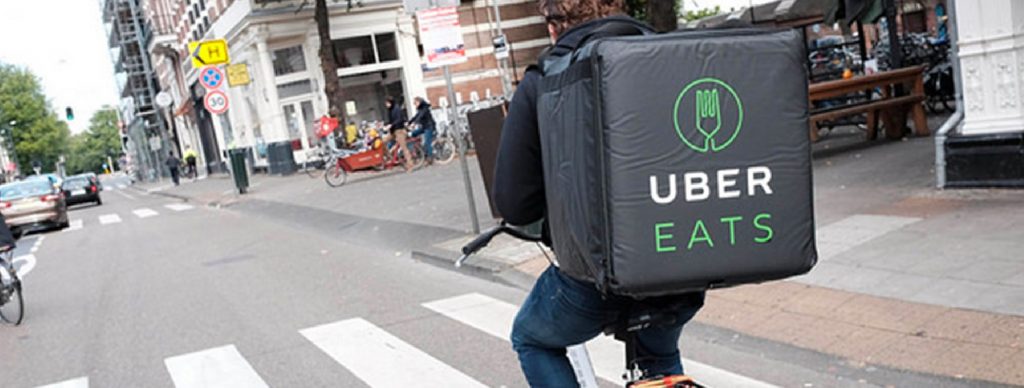
Just be sure to read the fine print so you understand all the fees and commission costs. If takeout isn’t your usual thing, make sure to ask about a short-term contract. You may find that you want to drop it after this crisis has resolved.
Another option is to build a native order-taking solution into your website. This may be the ideal solution because there are far fewer fees and you’re not dependent on a third-party. Of course, this requires that your website already has traffic and that you’re a known quantity in your town. But if this is you, then what are you waiting for? Just be aware that if you go it alone, you’ll be responsible for delivery. But takeout and curbside pickup are still options.
If you’re reading this guide, you’ve likely come to the conclusion that you’ll have to pivot to takeout, at the very least. If you already offer takeout, you probably have two prep lines. The first services your in-store orders while the second preps takeout orders. In this case, it’s just a matter of converting both lines to takeout—if you still have that many people on staff. This can make your takeout process extremely efficient.
Note: it’s more important than ever to inspect your takeout equipment. Ensure that your heat lamps, drawer warmers, cook and hold ovens, banquet carts and strip warmers are all in working order. Nothing will kill your takeout business faster than cold food.
If you’ve never done takeout before, you’ll need to look at your kitchen and decide how to optimize. Specific advice is difficult without seeing your particular setup. Review the advice above about optimizing kitchen space. Anything you’re not using should justify its existence.
To maximize efficiency, train your staff to be cognizant of critical pathways. Employees should know how and where to move so that they don’t interrupt work in progress. Every interruption, every slow down, equals an unsatisfied customer. Time is of the essence.
Consider investing in space saving measures such as wheels, vertical storage and movable shelves. This will open up space in your kitchen and prevent the aforementioned interruptions. Vertical storage allows you to place cutting boards, sheet pans and trays out of the way when not in use. If you have an unused wall, consider investing in wall storage. In addition, many walk-in coolers have unused wall space.
Once your new takeout setup is complete, put tape down on the floor to show your employees where the cook line is. Then execute practice sessions so your staff can create mock orders as they come in. This kind of practice may seem silly, but once you go live, every second counts. Remember, you’re now competing with many other restaurants for precious business, and some of them have been in the takeout game for a while already.
It’s our sincere hope that this guide has given you some ideas on how you can make it through this crisis unscathed. Remember that the virus is very contagious. Sick employees should stay home, even if they want to work. It’s up to you as the owner to be firm about this. We must all do our part to ensure that this remains a slow pandemic.
If you found this post helpful, could you give us a share? It might help someone else. Thank you!
Resources & Further Reading
OSHA: Guidance on Preparing Workplaces for COVID-19
NYC Health: Stay Home, New Yorkers: What You Need to Know Now About COVID-19
Structures and Functions of Coronavirus
Proteins: Molecular Modeling of Viral
Facebook Small Business Grants Program
Minnesota COVID-19 Resource Kit
Small Business Administration’s Economic Injury Disaster Loan

